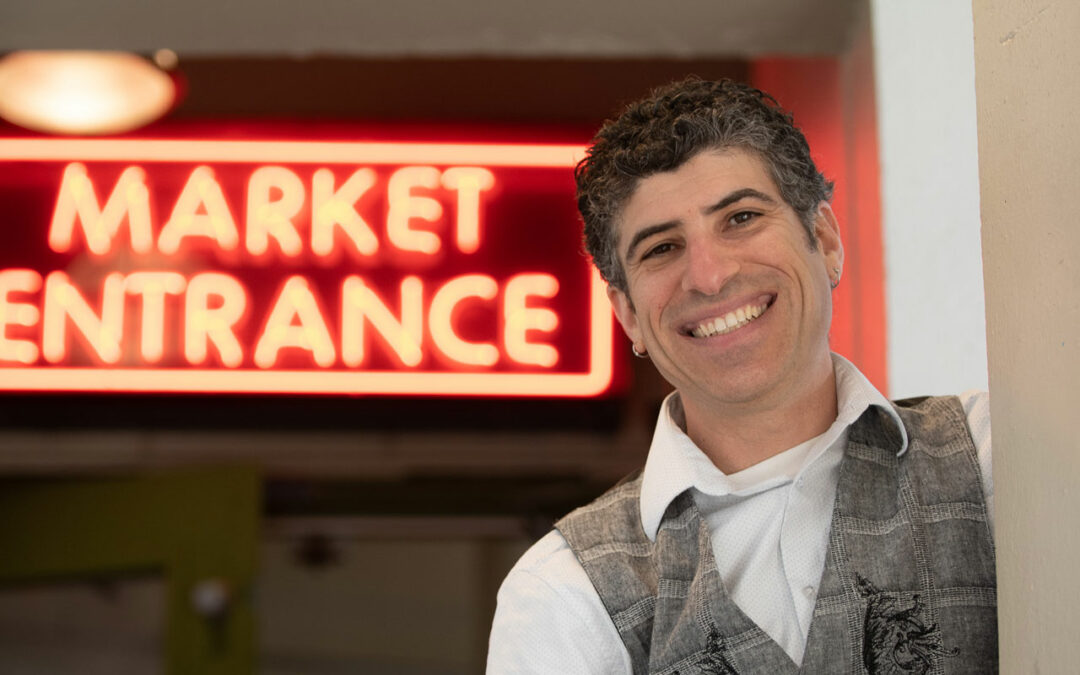
Marc Fendel photo by Karen Derby
Things have changed for many in the COVID era, but for Seattle saxophonist and music teacher Marc Fendel, what’s new has little to do with the virus and more to do with non-fungible tokens, or NFTs, and how they might change the whole music business.
Fendel says close friend, designer Evan Moss, who has done artwork for him and Bebop & Destruction (Fendel’s project from 1994-2006) turned him onto NFTs about a year ago. Fendel knew about the technology, but had been waiting out potential environmental and cost concerns surrounding NFTs before dipping a toe into that world. While many NFTs are costly to mint, with the Tezos blockchain, minting costs pennies. “This was a way for me to get into NFTs basically at no cost. Learn about the technology and have fun with it,” says Fendel.
Fendel has become something of an evangelist for NFTs on social media. Some of his friends took a certain level of offense at that, but he’s an avid believer in the technology and what it means for the future.
He’s been surprised at how it has changed how art is made. He can work with local musicians, or those on the other side of the world. “I’ve met artists from all over the world and reconnected with a lot of old friends who are interested in pairing their music with cryptocurrency and selling NFTs,” he says. It’s changed how artists are paid. When an NFT is collected, the funds are automatically distributed to the artists in the way in which they agreed, essentially cutting out the middle man. Even, the possible combinations of the art are broad. “NFTs can be attached to a physical piece of art or a record or a CD or a ticket or an experience. All kinds of things,” Fendel explains. “There’s going to be a lot of opportunity for utility, especially in the music world. It’s going to be unbelievable.”
The opportunity to pair visual art and music is particularly appealing. Fendel has reconnected with Seattle artist, Anne Grgich, who did some work with Bebop & Destruction back in the day, and their work together has taken off. “I’ve been collecting her art since the ‘90s,” Fendel says of Grgich. “I got her into NFTs about a year ago and we’ve done 33 collaborations with my music and her art. It’s been a full-on unbelievable experience.”
NFTs are changing artists and they are changing the business, too. It’s a little different than going on the road and hawking CDs or selling electronic tracks on Bandcamp or Spotify. “When you collect an NFT, you’re actually investing in me, not the song,” Fendel says. “It’s more like Patreon. I can see who has collected all of my work, and I can take all of that information and parse it out.” Collectors of NFTs could be offered free tracks, tickets, and other perks.
Fendel taught music at Seattle Drum School of Music for twelve years and managed its Georgetown branch for about five. He’s not doing much in-person teaching these days—he’s still lying low because of COVID—but he’s created an extensive library of video instruction and tutorials on his YouTube channel, “Music Education For All”.
Fendel’s goal for the future is one that many of us share: to get out and be among people more. He’d like to start traveling again; visiting artist friends and family in Los Angeles and meeting in person all of the folks he’s met remotely through the NFT work. As an early participant of the seasoned Tuesday sessions at the Owl ‘N Thistle, the saxophonist is itching to get back to the jams. He also wants to go retro and put out some of his digital music on vinyl. There’s plenty brewing and more on the horizon for Marc Fendel. Keep up with him on Facebook and Bandcamp. And, if you’re interested in investing differently in music, Fendel’s recent work can by found on objkt.com/profile/fendel/created. For Fendel, it truly is an exciting time to be in the music business. “It’s another way of presenting music and creating utility,” he says. “It’s the next iteration in the way that we share music and the way that we collect music.”